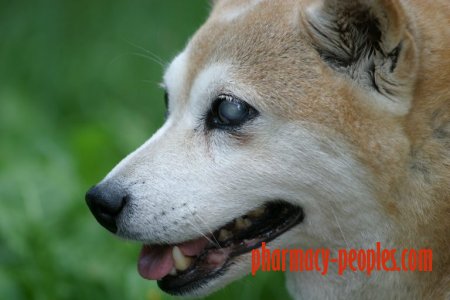Cataracts in Dogs
What are cataracts?
While the cloudiness may be due to ageing (the fancy word for that is nuclear sclerosis), the cloudiness could also be due to cataracts. Unlike nuclear sclerosis, cataracts don’t allow any light to pass through the lens of the eye, causing blindness in dogs and cats.
The lens usually consists of perfectly arranged fibres. The alignment is so perfect, it allows the lens to remain clear enough for light from the outside to pass through. Cataracts occur when these fibres are disrupted either because of:
- Developmental issues (seen with congenital cataracts and dietary deficiencies)
- Inflammation due to trauma or infection
- Toxin exposure
- Age
- Systemic disease, like diabetes mellitus
How do we know it’s a cataract?
Clouding of the lens can be caused by cataract and also a condition called nuclear sclerosis. It is important to differentiate the two conditions because while cataract can be a serious disease, nuclear sclerosis is a normal ageing process of the lens and does not lead to loss of vision. A normal lens continues to produce fibre throughout its life, which makes it more dense and opaque with age. Your veterinarian will shine a light through the lens to check for the opacity of the lens – this helps to differentiate the two conditions.
Why are cataracts a big deal?
We like to investigate cataracts because cataracts can often be a sign for underlying disease processes. As previously mentioned, diabetes mellitus is a huge offender and one that’s very important to get under control for your furbaby’s quality of life.
Even if it’s not diabetes, untreated cataracts can lead to complications. A cataract can “slip” and float around in the eye causing massive irritation. Otherwise, it can leak proteins out into the eyeball. This can cause severe inflammation which basically causes the eyeball to puff up. This condition is called glaucoma and it’s very painful. Ouch!
The other reason is vision loss, which can affect quality of life. However, furbabies can learn to cope with blindness. They become so capable of manoeuvring themselves at home that some owners don’t realise they’re blind until they’re in unfamiliar environments.
Treatment of cataracts
There is no successful medical cure for cataracts. Other medical treatments are aimed at controlling the underlying disease and preventing the secondary changes resulting from the cataract.
Cataract surgery is a specialist procedure, so your veterinarian will most likely refer you to a veterinary opthamologist. They will, in turn, assess whether your furbaby is a good candidate for surgery. A small cataract which is not obscuring vision may not warrant a surgical intervention at all.
95% of the patients recover vision immediately following the surgery and 80% of the patients have long term success. Just be aware, cataract surgery can be a big commitment! Your furbaby will need to wear an Elizabethan collar to avoid damage to the eye for a while and you can expect them to remain on eye medications long-term (months to years) after a successful surgery depending on their condition prior to the surgery.
Last words
In short, eyes are the windows to the soul and, sometimes, they can be windows that help us assess your furbaby’s health! Any changes you note should never be ignored. Remember that the sooner you seek veterinary attention, the higher the chances of us fixing the problem!
